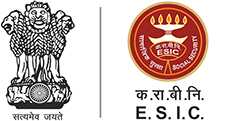ESIC Hospitals
ESIC General Hospital, Naroda
What's New
- Tender
- Circular
- Recruitment
- Home
- /
- Diagnostic Services
Diagnostic Services
Diagnostic Services
1. Clinical Assessment
-
The doctor begins with a detailed patient consultation, which includes:
-
Patient history
-
Physical examination
-
Review of any previous reports or health records
-
2. Recommendation of Diagnostic Tests
-
Based on the clinical findings, the doctor recommends appropriate diagnostic tests, such as:
-
Laboratory Investigations – blood, urine, stool, etc.
-
Radiology – X-rays, Ultrasound, ECG, etc.
-
Special Investigations – Biopsy, Histopathology, etc.
-
3. Issuance of Diagnostic Referral Slip
-
The doctor issues a referral slip (manual or electronic) indicating:
-
The patient’s details
-
The list of tests to be done
-
Special instructions (e.g., fasting, time-sensitive tests)
-
4. Explaining the Test to the Patient
-
The doctor (or nurse on duty) explains:
-
The purpose of the tests
-
Any preparation needed (e.g., fasting, medication pause)
-
Where and when to report for the test
-
5. Test Follow-Up & Report Review
-
After the patient undergoes the test:
-
Reports are either collected by the patient or sent to the doctor directly (for inpatients).
-
The doctor reviews and interprets the results, integrating them into the final diagnosis and treatment plan.
-
6. Next Steps in Treatment
-
Based on the test results, the doctor may:
-
Finalize the treatment
-
Modify the prescription
-
Refer to a specialist
-
Admit the patient for inpatient care (if required)
-
Last updated / Reviewed : 2025-06-30
 कर्मचारी राज्य बीमा निगम Employee's State Insurance Corporation श्रम एवं रोजगार मंत्रालय, भारत सरकार Ministry of Labour & Employment, Government of India
कर्मचारी राज्य बीमा निगम Employee's State Insurance Corporation श्रम एवं रोजगार मंत्रालय, भारत सरकार Ministry of Labour & Employment, Government of India